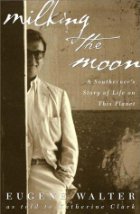The idea that you can rank universities in the world has to be one of the most misguided ideas ever conceived. The assumption must be that all universities in all countries have the same objectives. If this isn’t true, the ranking is meaningless.
The Academic Ranking of World Universities (ARWU) has the following criteria:
- 10%: Alumni winning Nobel Prizes and Fields Medals.
- 20%: Academic Staff winning Nobel Prizes and Fields Medals.
- 20%: ISI Highly Cited Researchers.
- 20%: Articles published in Science and Nature.
- 20%: Papers published that are indexed by the Science Citation Index (SCI) or the Social Science Citation Index (SSCI).
- 10%: Per capita academic performance of the above indicators.
Now, assume I am a worried university administrator. How can I improve my institution’s ranking?
I would propose the following strategy:
- Greatly expand research in selected areas of medicine and the natural sciences that tend to have articles published in Science and Nature.
- Expand selected areas in engineering that publish in easy-to-publish IEEE conferences and journals that are indexed by SCI. Better yet, require all undergraduate and graduate students to publish about six or so “SCI papers” with their advisor’s name on it to get their degree.
- Sack everyone else.
Also: Make sure you work in an institution which is at least about 100 years old and have focused on medicine and the natural sciences in the past. Remember: Nobel Prizes collected by staff and alumni over 50 years ago, they still count!
I leave it up to someone else to decide if such a rank-optimized university is what should characterize every university in the world.






